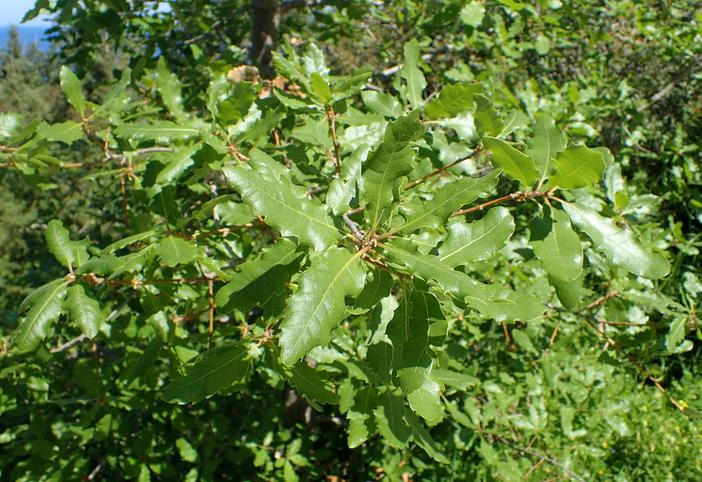Aleppo Oak
(Quercus infectoria subsp. veneris)
Aleppo Oak (Quercus infectoria subsp. veneris)
/
/

Krzysztof Ziarnek, Kenraiz
CC BY-SA 4.0
Image By:
Krzysztof Ziarnek, Kenraiz
Recorded By:
Copyright:
CC BY-SA 4.0
Copyright Notice:
Photo by: Krzysztof Ziarnek, Kenraiz | License Type: CC BY-SA 4.0 | License URL: https://creativecommons.org/licenses/by-sa/4.0 | Uploader: Kenraiz | Publisher: Wikipedia Commons










Estimated Native Range
Climate Requirements for Federal Way, Washington
| This Plant | Your Site | Plant Suitability for Your Location | ||
|---|---|---|---|---|
| • Precipitation | 4" - 49" | 42" | Aquatic | Aquatic |
| • High Temp. | 73°F - 105°F | 77°F | Your summer temperatures are normal for this plant. | Excellent |
| • Low Temp. | -11°F - 48°F | 33°F | Your winter temperatures are normal for this plant | Excellent |
This plant may not grow well at your location - your precipitation is too high.
Summary
Quercus infectoria subsp. veneris, commonly known as Aleppo Oak or Cyprus Oak, is a deciduous tree native to the Mediterranean region, including Southeast Europe and Western Asia. It is typically found in maquis shrubland, open woodlands, and on hillsides, often on calcareous soils. This oak grows moderately to a height and width of 20-30 feet (6-9 meters), forming a rounded canopy. The leaves are small and leathery, and it produces yellow or green catkins in the spring, which are generally inconspicuous. The acorns are notable for their use in traditional tanning and medical applications.
Aleppo Oak is valued for its hardiness and adaptability to various soil types, including clay and loam. It is drought-tolerant once established, making it suitable for xeriscaping and urban environments where water conservation is a priority. It thrives in full sun to part shade and requires medium amounts of water with good drainage. While not commonly used for ornamental purposes due to its less showy flowers, it is sometimes planted for its historical significance and contribution to biodiversity. Gardeners should be aware that it can be susceptible to oak wilt and other fungal diseases.CC BY-SA 4.0
Aleppo Oak is valued for its hardiness and adaptability to various soil types, including clay and loam. It is drought-tolerant once established, making it suitable for xeriscaping and urban environments where water conservation is a priority. It thrives in full sun to part shade and requires medium amounts of water with good drainage. While not commonly used for ornamental purposes due to its less showy flowers, it is sometimes planted for its historical significance and contribution to biodiversity. Gardeners should be aware that it can be susceptible to oak wilt and other fungal diseases.CC BY-SA 4.0
Plant Description
- Plant Type: Tree
- Height: 20-30 feet
- Width: 20-30 feet
- Growth Rate: Moderate
- Flower Color: N/A
- Flowering Season: Spring
- Leaf Retention: Deciduous
Growth Requirements
- Sun: Full Sun, Part Shade
- Water: Medium
- Drainage: Medium, Fast
Common Uses
Erosion Control, Low Maintenance
Natural Habitat
Native to maquis shrubland, open woodlands, and hillsides, often on calcareous soils
Other Names
Common Names: Cyprus Oak
Scientific Names: Quercus infectoria subsp. veneris, Quercus amblyoprion, Quercus amblyoprion, Quercus araxina, Quercus boissieri, Quercus boissieri subsp. latifolia, Quercus boissieri subsp. petiolaris, Quercus boissieri subsp. tauricola, Quercus boissieri var. latifolia
GBIF Accepted Name: Quercus infectoria subsp. veneris